Hair donation to make wigs for patients afflicted with cancer is gaining momentum, with hair stylists and younger people getting increasingly aware and sensitised to the issue
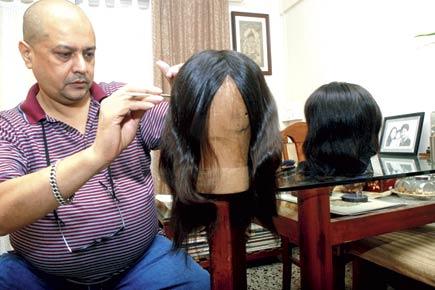
I could not deal with the hair loss and every time I would step out of the house, I would wear a wig,” says 62-year-old Madhuri Nayak, who was diagnosed with breast cancer in June 2013.
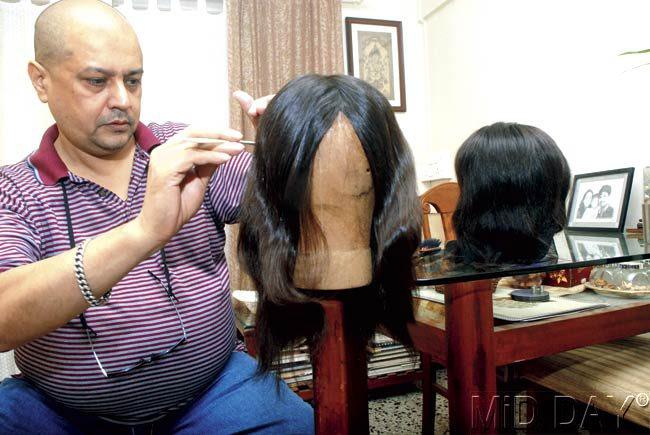
Hair stylist Yatin Deshpande creates wigs for cancer patients from donated hair. Pic/Pradeep Dhivar
While many consider hair just as a beauty element, for a patient who loses their hair due to an illness, hair becomes their identity. Though hair loss is usually temporary, it is often one of the most distressing side-effects of an illness. Without hair, patients feel naked; their illness ceases to be concealed any more.
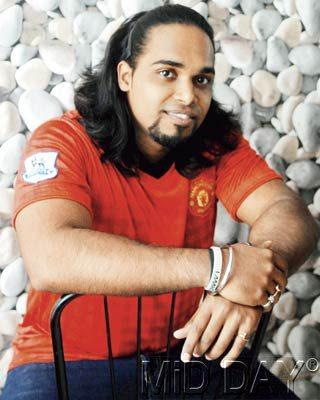
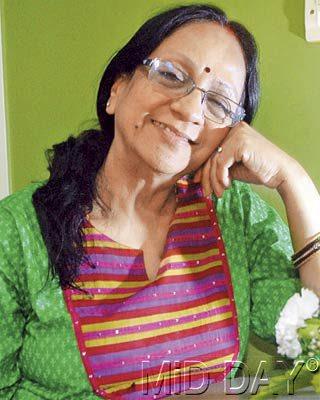
Lendle Sunny is growing his hair to create awareness about hair donation. Pic/Nimesh Dave and V-Care Foundation founder Vandana Gupta felt her baldness constantly reminded her of her illness. Pic/Pradeep Dhivar
The effects of chemotherapy were beyond anything Nayak had imagined. Within two months of chemotherapy, she not only lost most of her hair, she also started losing her eyelashes and eyebrows. “I looked ugly. I didn’t have a single strand of hair on my body. And with my bald head, my illness was upfront, for the world to see. I felt very exposed.”

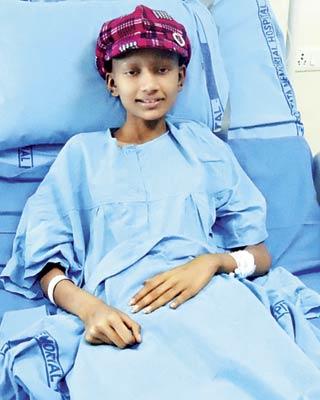
Salonee Kadrekar was diagnosed with a brain tumour. She lost her hair during chemotherapy and died in 2012
Unable to deal with the loss of her hair, Nayak got a wig made from Hair Aid, a non-profit associate of city wig company Allure Hair. Started by hair stylist Yatin Deshpande, Hair Aid aims to inspire people to grow healthy hair and donate it to make wigs for patients.
Before and After
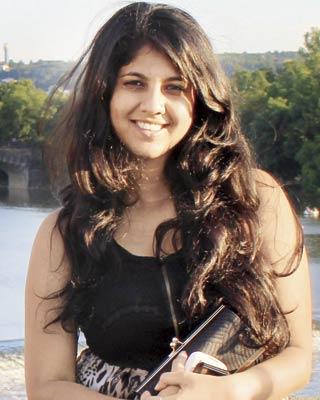
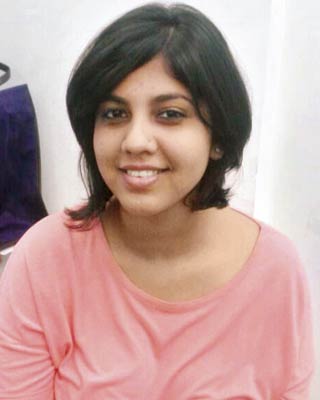
Pallavi Zarapkar donated 14 inches of her hair after her friend was diagnosed with cancer
Through Hair Aid, Deshpande provides wigs made of natural hair, which can usually cost up to Rs 18,000 for free or at a subsidised rate. Deshpande says, “Hair loss is devastating in any degree, from slight to severe.
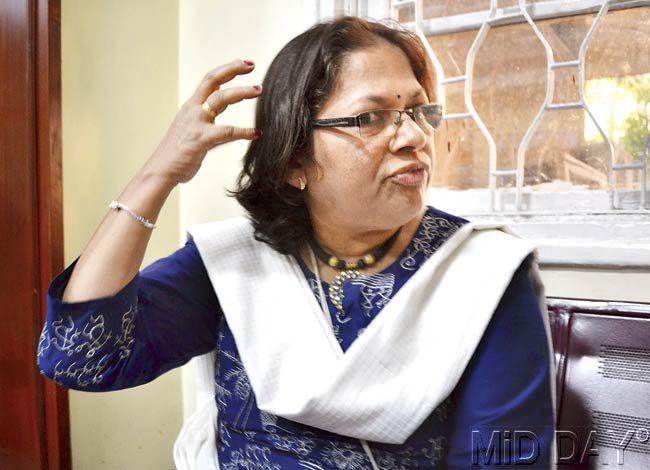
Counsellor Sunita Padwal believes people cannot deal with the baldness because they cannot accept cancer. Pic/Datta Kumbhar
A bald head attracts attention, especially for a woman. This affects their appearance and can be a setback for women who are already enduring physical and emotional pain.”
Weakness
In 2012, 15-year-old Salonee Kadrekar, a resident of Thane, died after battling a brain tumour for almost seven months. Her cousin, Samata Keer (31), describes Kadrekar as a fun-loving person, who believed in living life to the fullest. “Salonee was a typical teenager. She was very pretty; she loved fashion and dressing up.
Salonee lost her hair due to chemotherapy and only a month before her therapy, she had been awarded best hair at a competition. Not only for Salonee, but for any teenage girl, hair is very important. Salonee never showed her sadness over losing her hair, especially to her folks; she dealt with it silently. After she lost her hair, she felt more weak and vulnerable.”
Founder of V-Care Foundation, a Mumbai-based Non-Governmental Organization (NGO) providing emotional support to cancer patients, Vandana Gupta feels that losing hair tells the world that you are sick, even if one does not want to tell. “In 1993, when I was diagnosed with Hodgkin’s lymphoma, after a few sessions of chemotherapy, I didn’t want to look at myself in the mirror.
My baldness was a constant reminder of my illness. I used to wake up and there would be hair all over my pillow,” she says. Like Nayak, Gupta also got a wig made to wear when she went out. Never comfortable with the wig, Gupta eventually gave it up. “Inspite of wearing the wig, people would stare at me and ask what was wrong with me,” she adds.
Javed Mohammed (20) from Madhya Pradesh had been battling a rare form of cancer since the fragile age of 4, which left his face disfigured. In this form of cancer, the tumour grows in the bones of the legs, hands or jawbone of the patient. Though Javed has been cancer-free since 2010, his older brother Aarif (26) recalls, “My brother never got a chance to enjoy his childhood because of cancer.
In his age, when boys watch movies and have fun, he was confined at home because he had no hair. He lacked self-confidence. People always used to say, ‘He is a boy, why is he worried about his hair?’ It’s identity not only for women, but also for men.”
Donation
While people in the West are known to shave their hair and donate it to make wigs; this concept is relatively new in India, where not many are aware of hair donation. Advertising professional, Pallavi Zarapkar (24) decided to donate her waist-length hair, after her close friend was diagnosed with cancer.
She says, “When my friend was diagnosed, one of my first thoughts was that she would lose all her hair. Immediately I found out places where I could donate my hair, which could be used by cancer patients. From having hair below my waist, I now have a bob cut. I donated almost 14 inches of my hair.”
She adds, “When I got the haircut, at first I felt devastated. But wigs made of natural hair are expensive; I feel it is criminal to just throw hair away. Now I am planning to grow my hair for a year, and I will donate it again once I get the required length.”
Not just women, even men can donate hair, and that is what 21-year-old Lendle Sunny does. Aiming to be an air force pilot one day, Sunny says, “I always wanted to grow my hair and when I decided to go for a cut, my sister told me about Hair for Hope, an NGO based in Kerala, which makes wigs for cancer patients.
When people cannot accept a guy with long hair, I realised how hard it would be for them to accept a woman with no hair. But instead of the stares bothering me, I helped create awareness about hair donation. Now some of my friends are also interested in donating their hair.”
Stigma
Sunita Padwal, a counsellor for eight years at the Palliative Care Services at Tata Memorial Hospital, believes most patients are unable to embrace the baldness because of Indian society’s mindset. She says, “Most of the patients I interact with worry about finance, death, helplessness and hair loss.
There is a stigma surrounding cancer in India. If anyone sees a bald head, they immediately think that the person is going to die. And that is why people are so afraid of losing their hair. Maybe that’s why many opt for wigs and head scarves.”
Padwal adds that the need to have a hairpiece is different for every patient. While some may not be able to live without a hairpiece, some - like her sister, a breast cancer survivor - might not care too much about it. “Initially she got a wig made, but she never wore it. It’s not because she liked the way she looked without hair, but because she had embraced her illness and was dealing it with a positive attitude.”
Need
Providing customised wigs for films and television, hair stylist Surendra Salvi has been developing wigs for cancer patients for the past 10 years. He says, “More than women, I come across men, who wish to have a wig and hide their illness. Wigs help them conceal their illness and encourage them to lead a normal life.”
Donating wigs across various hospitals in the city, Salvi thinks hair not only helps enhancing one’s looks, but also greatly helps to boost one’s self confidence. “If you are bald by choice, you will flaunt your baldness. But for a patient, good looks keep them motivated and lifts their spirits”, he says.
Nayak further explains, “I have people stare at me, because of my wig, but that doesn’t bother me. Covering my bald head makes me much stronger to deal with the world and my weakness. For women, looks have always been important and a wig does nothing more than enhancing it.” For those who wish to donate their hair, they need to know some ground rules.
Deshpande explains that only hair of a certain length can be accepted to make a wig. Virgin hair (which has not been treated with chemicals or artificial colours) is preferred. The hair needs to be at least 12 inches and if it is layered, the shortest layer has to be 12 inches. Untied, loose and hair fallen on the floor is not usable. Deshpande also adds, while donating the hair, donors should remember to tie the hair in a plait or pony tail.
Awareness
V-Care Foundation is soon starting an initiative to provide free wigs to underprivileged patients. Gupta says “Patients from economically challenged backgrounds don’t think about buying wigs as most of them have difficulties just affording their medicines. Hair loss affects everyone and we are encouraging people to donate hair.”
Sunny adds, “We give a lot of importance to outer beauty. If someone does not fit the stereotype, they get odd looks. We have to be more considerate especially towards people suffering from life-threatening diseases.”
 Subscribe today by clicking the link and stay updated with the latest news!" Click here!
Subscribe today by clicking the link and stay updated with the latest news!" Click here!









